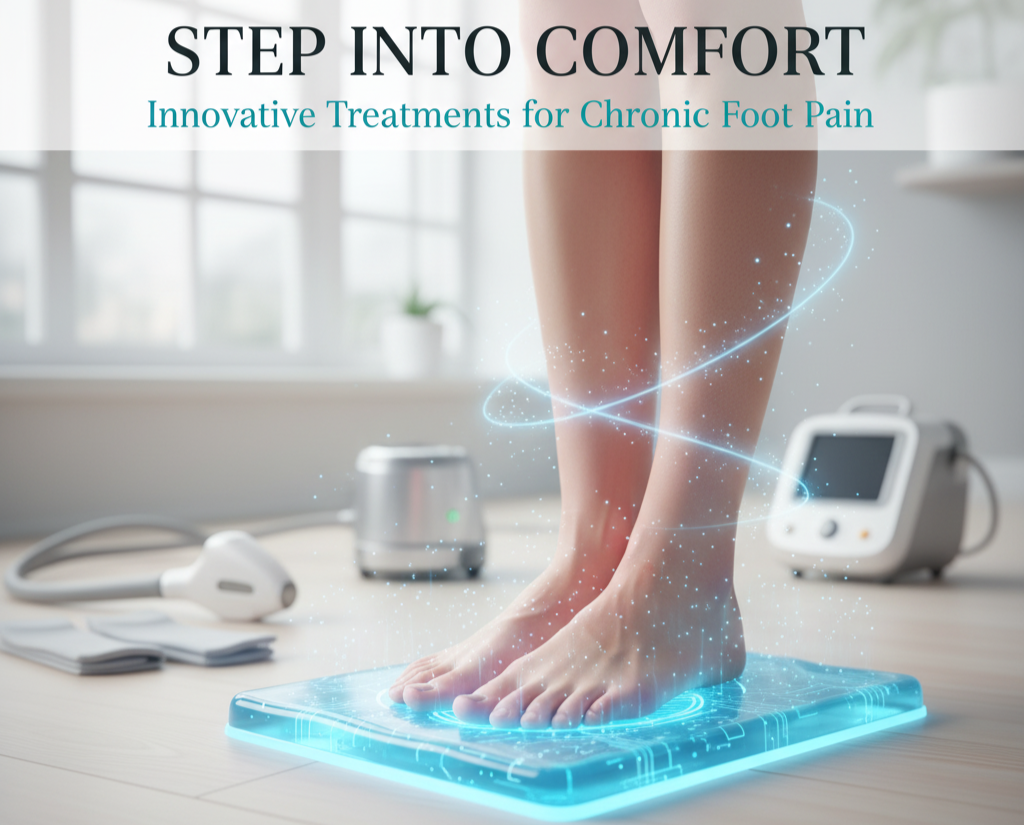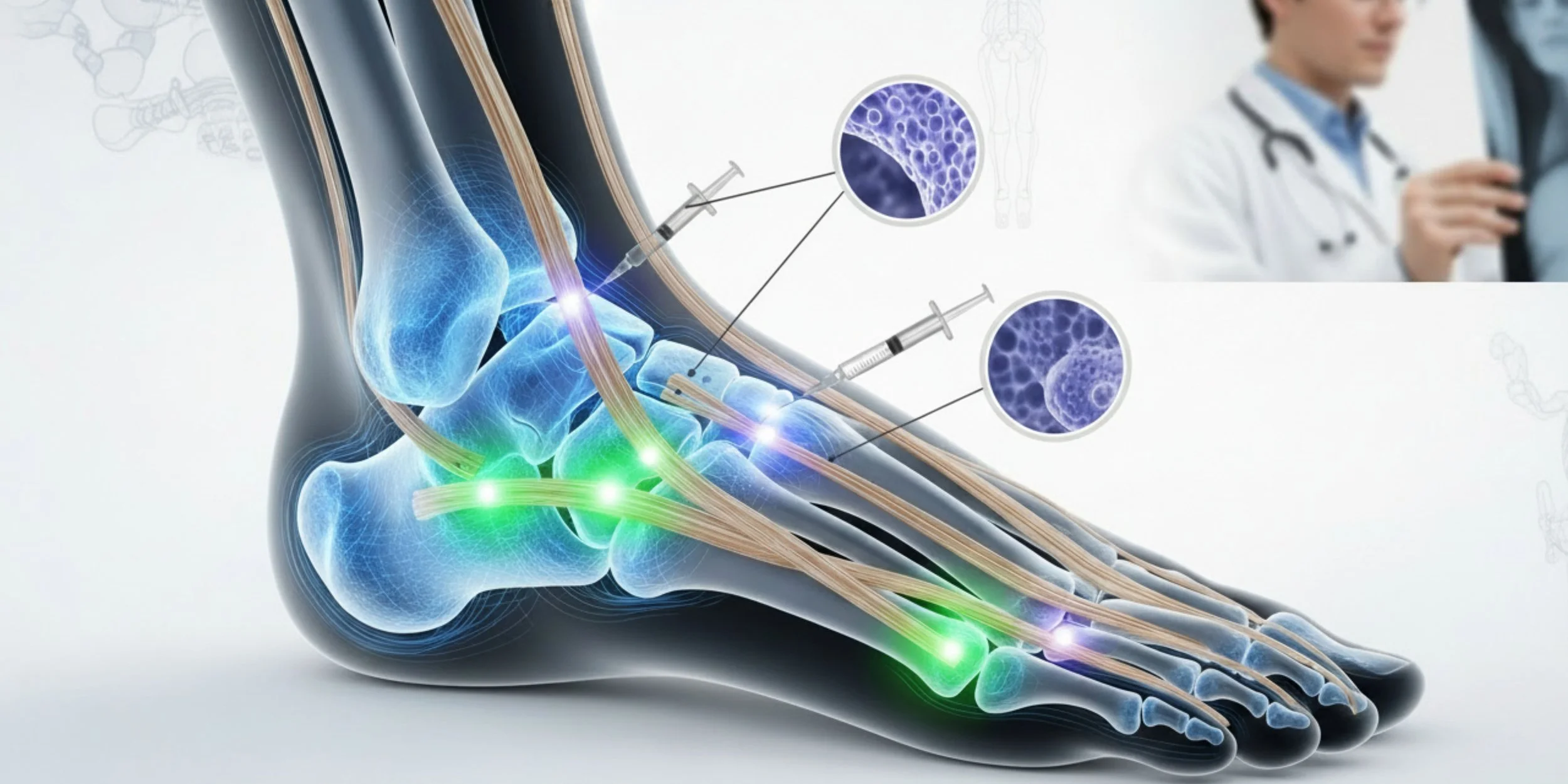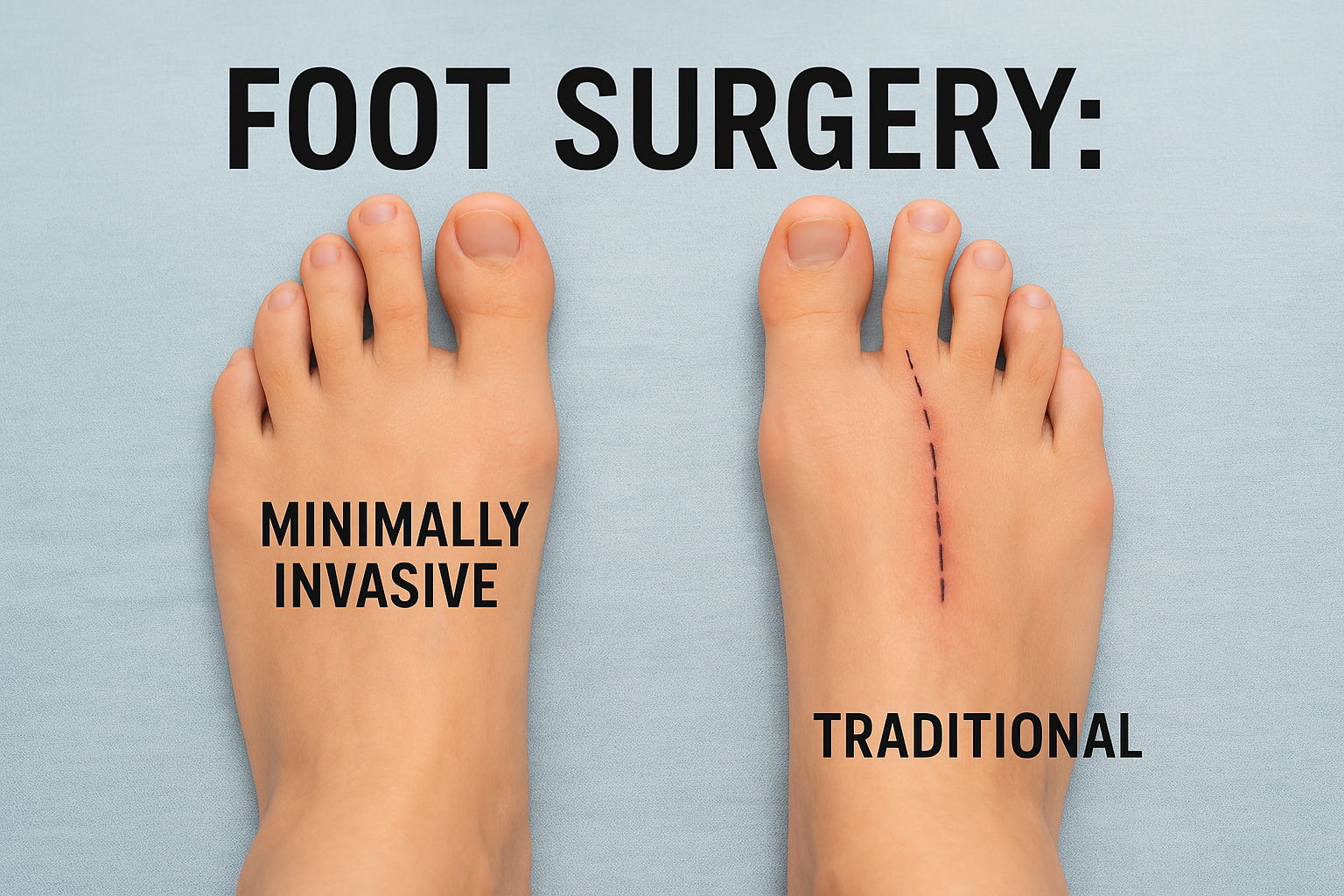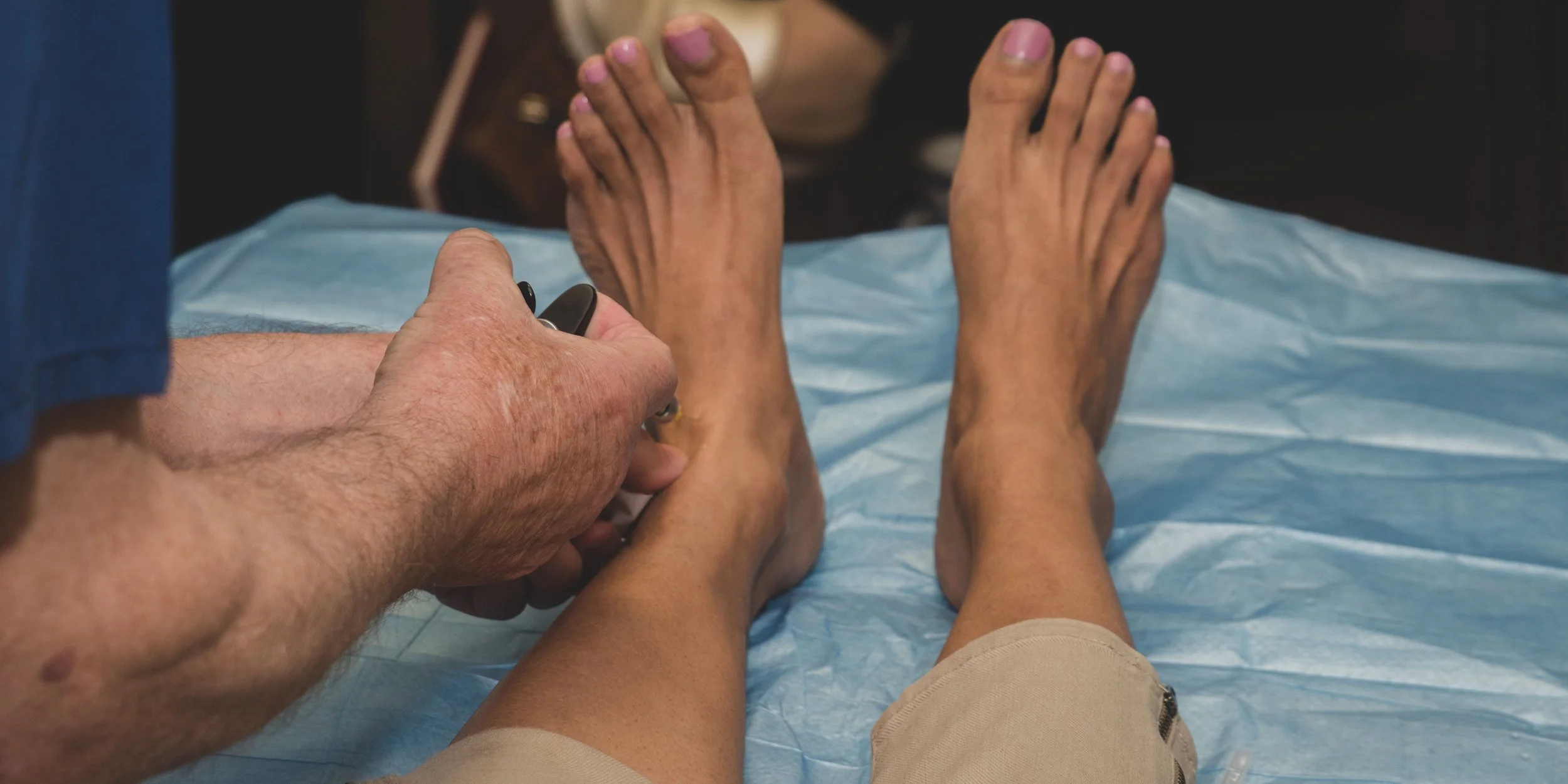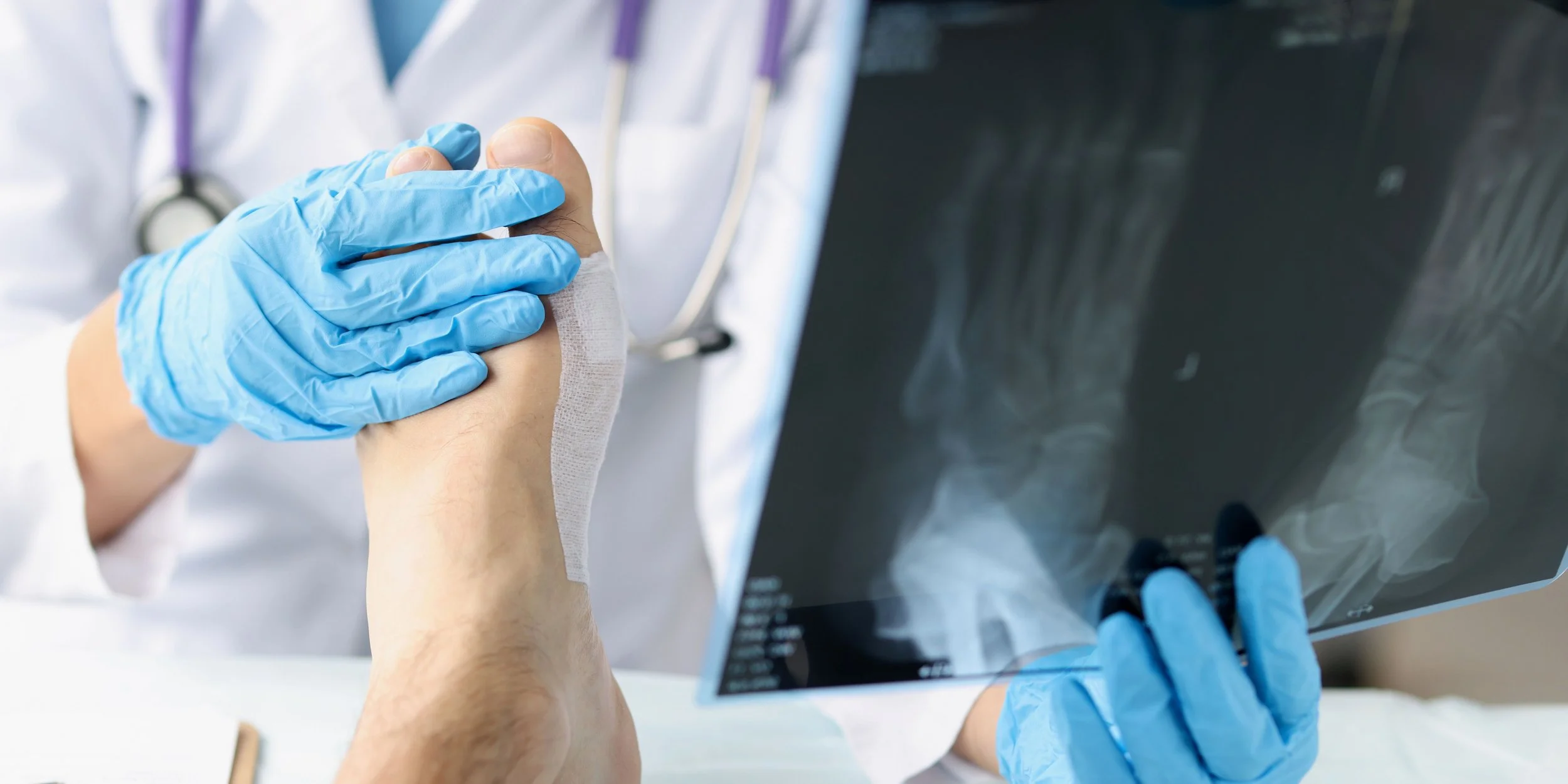The Art of Healing: Minimally Invasive Surgery
When most people think about surgery, they imagine long hospital stays, painful recoveries, and noticeable scars. Fortunately, medical advancements have redefined what surgery can look like—especially in podiatry. Minimally Invasive Surgery (MIS) is transforming the way patients recover from common and complex foot conditions, offering faster healing, less pain, and beautiful results.
At Pacific Point Podiatry, Dr. Tea Nguyen specializes in the art and science of these techniques. She combines precision medicine with a deep respect for her patients’ goals—whether that’s walking pain-free, returning to sports, or simply enjoying life without constant discomfort.
In this blog, we’ll explore what makes minimally invasive foot and ankle surgery unique, which conditions it can address, the benefits compared to traditional surgery, and why it truly is an art form as much as a medical innovation.
What Is Minimally Invasive Surgery?
Minimally invasive surgery (MIS) involves performing surgical corrections through very small incisions—sometimes just a few millimeters wide. Using specialized instruments and advanced imaging, a surgeon can repair bones, joints, and soft tissues without the need for large cuts or extensive dissection.
Unlike traditional open surgery, which may involve incisions several inches long, MIS techniques reduce trauma to surrounding tissues. This allows for:
Smaller incisions (tiny entry points instead of large scars)
Less disruption of blood supply and soft tissues
Reduced swelling and postoperative pain
Faster functional recovery
While MIS has been used for decades in other specialties—such as orthopedics, cardiology, and gynecology—it has gained tremendous popularity in podiatric surgery over the last 10–15 years. Today, patients have more access than ever before to advanced care that restores mobility without the long downtime.
Conditions Treated with Minimally Invasive Surgery
One of the reasons MIS is considered an “art” is because no two feet are alike. Each patient presents with unique anatomy, lifestyle goals, and challenges. A skilled surgeon like Dr. Tea evaluates the whole person—not just the X-ray—before recommending MIS.
Some of the most common conditions that can be treated with minimally invasive techniques include:
1. Bunions (Hallux Valgus)
A bunion is a bony bump at the base of the big toe that causes pain, swelling, and deformity. Traditional surgery involves a long incision and bone realignment, but MIS allows the surgeon to correct the bunion through tiny keyhole incisions, using specialized burrs to reshape the bone and shift alignment.
2. Hammertoes
Hammertoes are curled or contracted toes that cause painful pressure and difficulty wearing shoes. MIS can straighten the toe by releasing soft tissues and realigning small bones—all with minimal scarring.
3. Heel Spurs & Plantar Fasciitis
Chronic heel pain often results from inflamed fascia or bony spurs. With MIS, surgeons can remove spurs or release tight tissues through tiny incisions, sparing patients from a long recovery.
4. Bone Spurs & Arthritis of the Foot
Over time, arthritis can cause painful bone spurs and limited motion in joints like the big toe. MIS techniques allow for smoothing or fusing of joints without the large exposures of open surgery.
5. Fractures & Sports Injuries
Certain fractures and soft tissue injuries can be stabilized using minimally invasive hardware placement, allowing athletes to return to movement faster.
6. Cosmetic Foot Surgery
Beyond function, some patients desire aesthetic improvements—such as reducing prominent bones or reshaping toes. MIS allows for subtle, elegant corrections with nearly invisible scars.
The Benefits of Minimally Invasive Surgery
Choosing MIS is not only about avoiding scars—it’s about a better overall healing experience. Patients often describe feeling surprised at how quickly they’re able to walk again after surgery. Some of the most significant benefits include:
1. Smaller Incisions, Minimal Scarring
The most obvious difference is cosmetic. Instead of long scars, patients are left with tiny puncture-like marks that fade over time. This matters not only for appearance but also for comfort, especially when wearing open-toed shoes.
2. Less Postoperative Pain
Because MIS preserves more of the surrounding soft tissues and blood supply, there’s significantly less trauma. Many patients require fewer pain medications after surgery.
3. Reduced Risk of Complications
Large wounds can increase risks of infection, wound breakdown, and delayed healing—especially in patients with diabetes or circulation issues. Smaller incisions reduce these risks.
4. Faster Recovery & Earlier Weight Bearing
With proper postoperative protocols, many patients are able to walk the same day of surgery in a protective boot. Recovery milestones are typically faster than with traditional open procedures.
5. Outpatient Convenience
Most MIS procedures are performed in an outpatient setting, meaning patients can go home the same day. This reduces cost and makes the experience more comfortable.
6. Preserving Natural Anatomy
Rather than removing large amounts of bone or tissue, MIS focuses on making precise adjustments that respect the natural structure of the foot. This contributes to more natural movement after healing.
Why Minimally Invasive Surgery Is an Art
Science provides the tools, but artistry comes from the surgeon’s vision and precision. Here’s why:
Customized Corrections – Every foot is unique. MIS requires careful planning to make micro-adjustments that restore balance.
Technical Skill – Working through tiny incisions demands exceptional dexterity and experience. The surgeon operates with indirect visualization, relying on feel, instruments, and imaging.
Aesthetic Awareness – Foot surgery isn’t just about function. The best outcomes blend structural correction with a beautiful, natural appearance.
Patient-Centered Philosophy – A true artist listens. Dr. Tea spends time understanding her patients’ goals—whether it’s wearing heels again, hiking pain-free, or simply walking comfortably at work.
Minimally invasive surgery reflects a philosophy of doing more with less: correcting problems effectively while respecting the body’s natural form and function.
What to Expect Before, During, and After MIS
Patients are often surprised by how streamlined the process is compared to what they imagine surgery to be.
Before Surgery
Comprehensive consultation with Dr. Tea
Review of medical history, imaging, and goals
Discussion of alternatives and whether MIS is right for you
Preoperative instructions (medications, activity, footwear planning)
During Surgery
Local anesthesia with sedation or regional block (general anesthesia is often unnecessary)
Small incisions (2–5 mm)
Real-time imaging for accuracy
Procedure length varies (often shorter than open surgery)
After Surgery
Protected weight bearing in a boot or surgical shoe
Minimal stitches (sometimes none required)
Pain controlled with over-the-counter medication in many cases
Return to desk work within days, more active lifestyles within weeks
Gradual transition back to regular shoes as healing progresses
Myths About Minimally Invasive Surgery
Despite its benefits, there are still misconceptions. Let’s set the record straight:
Myth #1: MIS is “cosmetic only.”
Fact: MIS addresses both functional and aesthetic concerns, treating real structural issues.Myth #2: It’s only for small problems.
Fact: MIS can treat a wide range of conditions, including severe bunions and arthritis.Myth #3: Recovery is instant.
Fact: While faster than open surgery, healing still requires patience, proper footwear, and follow-up care.Myth #4: Results aren’t as durable.
Fact: When performed by a trained specialist, outcomes are just as long-lasting as traditional methods.
Why Choose Dr. Tea Nguyen for Minimally Invasive Surgery
Not every podiatrist is trained in MIS. It requires advanced education, experience, and a philosophy that values precision and patient-centered care.
Dr. Tea Nguyen is among the select podiatrists who specialize in these advanced techniques. She has built a reputation for blending medical expertise with artistry, helping patients achieve not just relief from pain, but also confidence in how their feet look and feel.
At Pacific Point Podiatry, patients can expect:
A welcoming, personalized experience
Honest guidance on whether MIS is the right choice
State-of-the-art technology and sterile safety protocols
Compassionate aftercare to support recovery every step of the way
Conclusion
The art of minimally invasive foot and ankle surgery lies in its ability to correct painful problems while preserving the natural beauty and function of the foot. It offers patients a path to healing that is faster, less painful, and more aesthetically pleasing than traditional surgery.
Whether you’re struggling with bunions, hammertoes, chronic heel pain, or simply want to walk without discomfort, minimally invasive techniques may be the solution you’ve been waiting for.
At Pacific Point Podiatry, Dr. Tea Nguyen is proud to offer this life-changing option to patients who want more than just surgery—they want results that honor both their health and lifestyle.
Take the Next Step Toward Pain-Free Feet
If you’re struggling with foot or ankle pain and want to explore whether minimally invasive surgery is right for you, schedule a consultation with Dr. Tea Nguyen at Pacific Point Podiatry. Discover how the art and science of MIS can help you walk confidently, comfortably, and beautifully again




